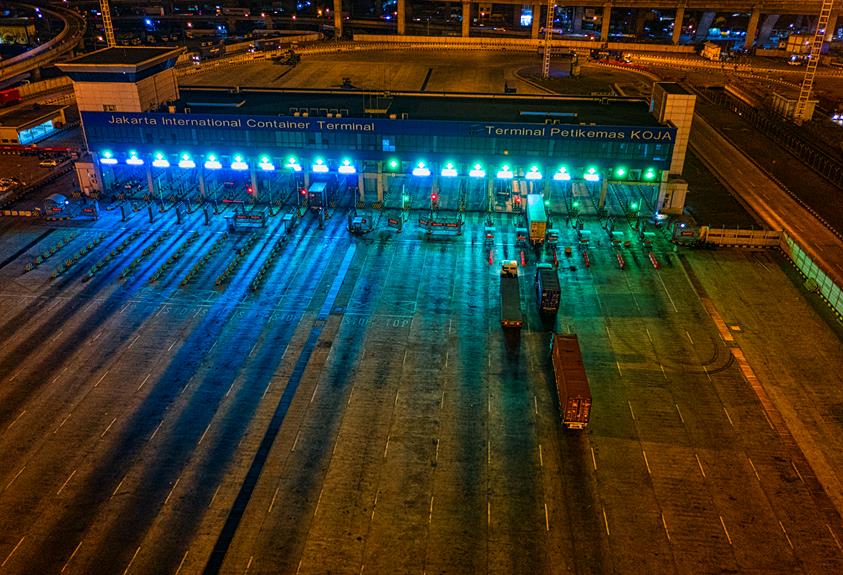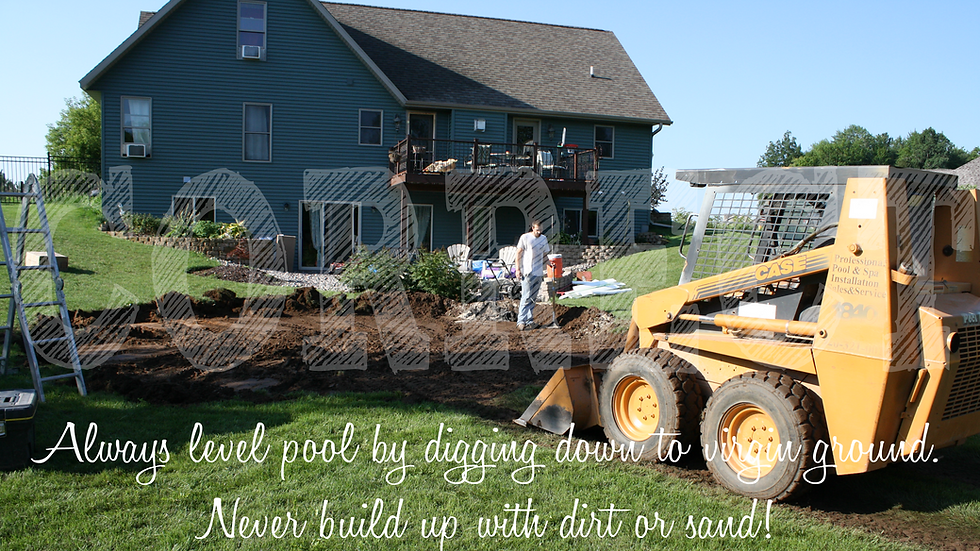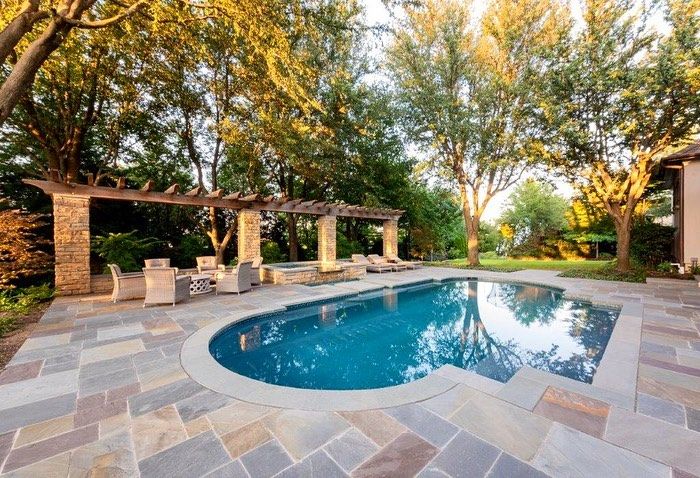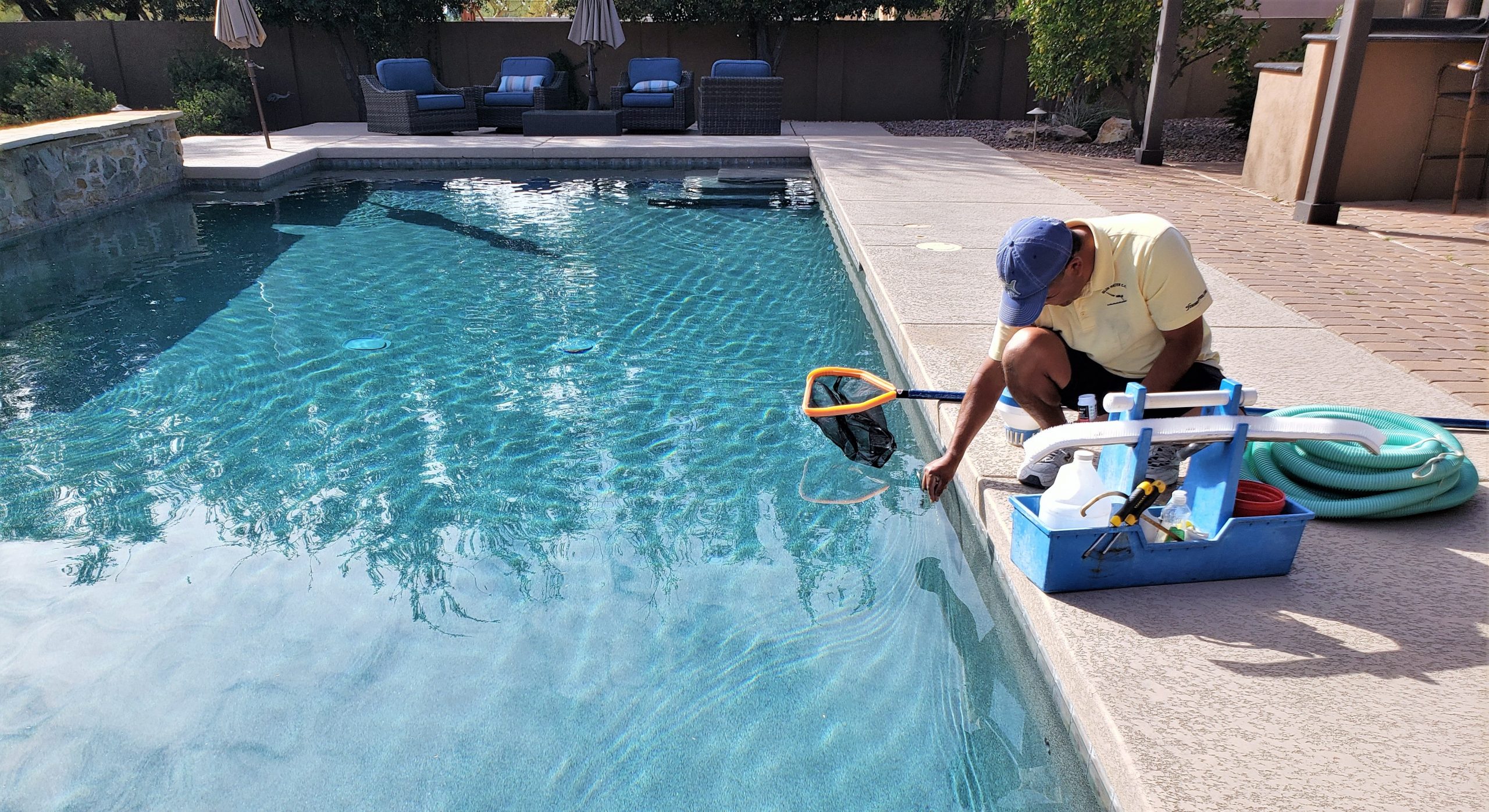Are you tired of swimming in the same old pool designs? Looking for a cost-effective and innovative alternative? Well, look no further! Dive into the world of shipping container pools. These repurposed marvels offer a unique and eco-friendly solution to your swimming needs. In this article, we'll explore the benefits and downsides, customization options, and maintenance requirements of building a shipping container pool. Get ready to make a splash with this modern and imaginative addition to your backyard oasis.
Key Takeaways
- Shipping container pools are a cost-effective and eco-friendly alternative to traditional inground pools.
- They offer customization options and are portable, but have limited size and design options due to the size of the container.
- Proper maintenance, including cleaning, balancing water chemistry, and preventing rust and corrosion, is necessary to ensure a lifespan of 10-20 years.
- DIY installation is possible with the right knowledge and experience, but inground installation may require more complex construction work.
Cost Considerations
When considering building a shipping container pool, it's important to factor in the cost of installation and maintenance. The cost of installation will depend on various factors such as the location, size, and customization options you choose. Typically, the installation cost ranges from $20,000 to $50,000. This includes the excavation, foundation, plumbing, electrical work, and the actual modification of the shipping container. It's crucial to hire professionals who have experience in container pool installation to ensure a safe and reliable result.
In terms of maintenance, the cost will depend on the size of the pool and the frequency of use. On average, you can expect to spend around $500 to $1,500 per year on maintenance. This includes cleaning, water testing, chemical balancing, filter replacement, and occasional repairs. It's important to keep up with regular maintenance to prevent any issues and prolong the lifespan of your pool.
Now that you understand the cost considerations involved in building a shipping container pool, let's explore the customization options available.
Customization Options
To customize your swimming pool, you can choose from a variety of options such as adding a deck, installing built-in seating, or incorporating a water feature. These customization options allow you to create a unique and personalized space that suits your preferences and enhances the overall aesthetics of your shipping container pool.
One of the customization options you can consider is adding a deck around your pool. This not only provides a functional space for lounging and sunbathing but also adds a touch of elegance to your pool area. You can choose from various materials such as wood or composite decking to create the desired look and feel.
Another option is installing built-in seating. This allows you to create a comfortable and inviting space where you can relax and entertain guests. Whether it's a built-in bench or a seating area with cushions, this customization option adds both functionality and style to your swimming pool.
Incorporating a water feature is another way to customize your shipping container pool. Whether it's a cascading waterfall, a bubbling fountain, or a soothing spa jet, a water feature adds a sense of tranquility and luxury to your pool area.
While these customization options offer endless possibilities, it's important to consider potential challenges. For instance, the size and design limitations of the shipping container may restrict certain customization options. Additionally, the lack of insulation in the container can make it challenging to maintain the desired water temperature, especially in colder climates.
Despite these challenges, with careful planning and consideration, you can create a customized shipping container pool that meets your needs and reflects your personal style. So go ahead, unleash your creativity, and transform your pool into a stunning oasis that you can enjoy for years to come.
Sustainability Factors
By repurposing existing resources, shipping container pools contribute to sustainable practices and reduce waste. These pools are made from repurposed shipping containers, which helps to minimize the environmental impact of construction. Instead of using traditional building materials, such as concrete or fiberglass, shipping container pools make use of sustainable materials that already exist. This not only reduces waste but also decreases the need for new materials to be produced.
Here is a table that highlights the sustainable materials used in shipping container pools:
| Sustainable Materials Used in Shipping Container Pools |
|---|
| Recycled shipping containers |
| Pool liners made from eco-friendly materials |
| Energy-efficient pumps and filtering systems |
| Eco-friendly paint and sealants |
| Natural or recycled decking materials |
Shipping container pools also have a smaller environmental footprint compared to traditional pools. The repurposing of shipping containers reduces the demand for new construction materials, and the use of energy-efficient equipment helps conserve energy. Additionally, the portable nature of these pools means they can be easily relocated, minimizing the impact on the surrounding environment.
It is worth noting that the environmental impact of shipping container pools can vary depending on factors such as maintenance and water treatment. Proper maintenance is crucial to prevent rust and corrosion, as these issues can lead to leaks and the need for repairs. Additionally, using eco-friendly water treatment options, such as chlorine alternatives, can further enhance the sustainability of these pools.
Durability and Weather Resistance
With proper maintenance, your shipping container pool can withstand harsh weather conditions and remain durable for many years. When comparing durability, shipping container pools are built to withstand extreme weather conditions such as high winds, heavy rain, and even snow. The solid steel construction of shipping containers provides a sturdy foundation that can withstand the elements. In addition, shipping containers are designed to be weather-resistant, with features such as watertight seals and corrosion-resistant coatings.
To ensure the longevity of your shipping container pool, regular maintenance is crucial. This includes inspecting the pool for any signs of rust, cracks, or leaks and addressing them promptly. It is also important to clean the pool regularly and balance the water chemistry to prevent corrosion. Taking care of the pool's surface by applying protective coatings can further enhance its weather resistance.
When it comes to weather resistance, shipping container pools have an advantage over traditional pools. Traditional pools are often made of materials such as concrete or fiberglass, which can deteriorate over time due to exposure to the elements. Shipping containers, on the other hand, are specifically designed to withstand the rigors of transportation and are built to last.
Size and Design Limitations
When considering a shipping container pool, keep in mind that the size and design options may be limited due to the container's dimensions. The standard sizes for shipping container pools are 8x20ft or 8x40ft, which means you will have to work within these dimensions when planning your pool. This can pose some limitations in terms of pool size and shape. However, despite these constraints, there are still various design options available to create a unique and aesthetically pleasing pool.
While the size of the container may limit the overall size of the pool, you can still customize the design to suit your preferences. You can choose to have a pool that is fully above ground, partially inground, or completely inground. You can also add features like stairs, benches, or even a spa area within the container. Additionally, you have the freedom to select the type of pool liner, pump, and filtering system that best fits your needs.
It's important to consider the design limitations when planning your shipping container pool project. The size and shape of the container will ultimately determine the pool's dimensions, so it's essential to work with a professional who can help you make the most of the available space. They can guide you in creating a design that maximizes the functionality and aesthetics of your pool.
Maintenance Requirements
To ensure the longevity and optimal performance of your shipping container pool, proper maintenance is crucial. Regular upkeep includes implementing rust prevention techniques and regularly balancing the water chemistry. By taking these maintenance requirements seriously, you can enjoy your pool for years to come without worrying about corrosion or imbalanced water quality.
Rust Prevention Techniques
One way to prevent rust in your shipping container pool is by applying a protective coating. Rust is a common issue with shipping container pools due to their exposure to moisture and harsh weather conditions. To ensure the longevity of your pool and prevent corrosion, it is crucial to maintain the surface regularly. Start by thoroughly cleaning the container and removing any existing rust. Next, apply a high-quality coating specifically designed for metal surfaces. This coating acts as a barrier, preventing moisture from coming into contact with the metal and causing rust. Additionally, inspect the surface regularly for any signs of damage or deterioration and address them promptly. By taking these steps, you can effectively prevent rust and ensure the durability of your shipping container pool.
To maintain your shipping container pool, it's not just about preventing rust, but also about balancing water chemistry.
Balancing Water Chemistry
Achieving proper water chemistry in your shipping container pool is essential for maintaining its longevity and ensuring a safe and enjoyable swimming experience. Here are some key points to consider:
- Regular water testing: It is crucial to regularly test the water in your shipping container pool to ensure that it is properly balanced and free from contaminants.
- Pool chemicals: Using appropriate pool chemicals, such as chlorine or bromine, is necessary to sanitize the water and prevent the growth of algae and bacteria.
- pH balance: Maintaining the right pH balance is important for the comfort of swimmers and to prevent damage to the pool's surface and equipment.
- Alkalinity and calcium hardness: These levels need to be monitored and adjusted to prevent corrosion and scaling.
- Regular maintenance: Regularly cleaning and maintaining the pool's filtration system will help keep the water clean and clear.
Lifespan and Longevity
When considering a shipping container pool, it's important to understand its lifespan and longevity. On average, these pools can last anywhere from 10 to 20 years with proper maintenance. Factors such as maintenance practices, container quality, and exposure to harsh weather conditions can affect the overall longevity of the pool.
Average Lifespan and Maintenance
Maintaining a shipping container pool requires regular cleaning and proper water chemistry balancing, similar to traditional inground pools. To ensure a long lifespan for your pool, there are a few factors to consider and maintenance techniques to follow:
- Proper cleaning: Regularly clean the pool's surface to prevent rust and corrosion.
- Water chemistry balancing: Test and adjust the pool's pH, chlorine levels, and other chemical parameters to keep the water safe and balanced.
- Surface maintenance: Check for any signs of rust, cracks, or leaks and fix them promptly to prevent further damage.
- Container quality: The quality of the shipping container itself can impact its lifespan, so choose a high-quality container or consider reinforcing it.
- Maintenance schedule: Stick to a regular maintenance schedule to catch any issues early and keep your pool in optimal condition.
Factors Affecting Pool Longevity
To maximize the lifespan of your pool, consider factors such as container quality, maintenance techniques, and environmental conditions. The quality of the shipping container used for your pool is crucial in determining its longevity. Factors affecting pool aesthetics, such as the design and condition of the container, can also impact the overall lifespan. Regular maintenance is key to ensuring the durability of your pool. This includes cleaning and balancing the water chemistry, as well as inspecting for rust, cracks, or leaks. Environmental conditions, such as exposure to harsh weather or high levels of humidity, can also affect the lifespan of your pool. It is important to note that the lifespan of a shipping container pool is typically 10-20 years, depending on these factors. Considering these aspects will not only help prolong the life of your pool but also have a positive impact on your property value.
Moving on to the subsequent section about comparing durability to traditional pools, it is important to assess the long-term benefits and drawbacks of a shipping container pool.
Comparing Durability to Traditional Pools?
Comparing durability, traditional pools may have a longer lifespan than shipping container pools. However, shipping container pools still offer a durable option for swimming enthusiasts. Here's what you need to know about the durability comparison and weather resistance assessment of shipping container pools:
- Shipping container pools are engineered to withstand harsh weather conditions, including extreme temperatures, UV exposure, and heavy rainfall.
- The pool liner, made from durable materials such as PVC or fiberglass, provides added protection against wear and tear.
- Proper maintenance, including regular cleaning and rust prevention, is crucial to ensure the longevity of the pool.
- Rust and corrosion can be minimized by applying protective coatings and inspecting the pool for any signs of deterioration.
- While traditional pools may have a longer lifespan, shipping container pools can still offer years of enjoyment with proper care and maintenance.
Heating and Temperature Regulation
If you choose to build a shipping container pool, keep in mind that temperature regulation can be challenging due to the lack of insulation. The insulation options for shipping container pools are limited, which can affect the heating efficiency of the pool. Without proper insulation, it can be difficult to maintain a consistent water temperature, especially in extreme weather conditions.
One option for improving heating efficiency in a shipping container pool is to insulate the walls and floor of the container. This can be done by adding insulation panels or foam boards to the interior of the pool. These insulation materials can help to reduce heat loss and retain the warmth of the water for longer periods.
Another option is to use a pool cover or solar blanket. These covers can help to trap heat and prevent evaporation, which can lead to heat loss. By keeping the pool covered when not in use, you can help to maintain a more consistent water temperature and reduce the amount of energy needed to heat the pool.
Additionally, installing a pool heater can greatly improve the heating efficiency of a shipping container pool. There are several types of pool heaters available, including electric, gas, and solar heaters. Each type has its advantages and disadvantages, so it's important to choose the one that best suits your needs and budget.
DIY Installation Possibilities
When it comes to installing a shipping container pool yourself, there are several possibilities to consider. With the right technical knowledge and experience, DIY installation is certainly achievable. You can choose to use a DIY shipping container pool kit, which provides all the necessary materials and instructions, or you can source a shipping container yourself and customize it to fit your needs. While DIY installation may require more time and effort, it can be a cost-effective option compared to hiring professionals.
DIY Vs Professional
Hiring a professional to build your shipping container pool ensures proper installation and reduces the risk of costly mistakes. When considering whether to tackle the project yourself or hire a professional, there are several important cost considerations to keep in mind:
- Expertise: Professionals have the knowledge and experience to design and build the pool correctly, ensuring it meets all safety and regulatory standards.
- Time: Building a shipping container pool requires significant time and effort. Hiring a professional allows you to save time and focus on other priorities.
- Quality: Professionals use high-quality materials and techniques, ensuring the pool is durable and long-lasting.
- Warranty: Professionals typically offer warranties on their work, providing peace of mind and protection against any unforeseen issues.
- Cost: While hiring a professional may involve an upfront cost, it can save you money in the long run by avoiding potential mistakes and costly repairs.
Cost of DIY
To determine the cost of a DIY shipping container pool, consider factors such as materials, equipment, and labor. When comparing the cost of a DIY shipping container pool to a professionally installed one, there are several key aspects to consider. Firstly, the materials required for the pool, such as the shipping container, pool liner, pump, and filtering system, will contribute to the overall cost. Secondly, the equipment needed for the installation process, such as excavation tools and plumbing supplies, should be factored in. Lastly, the labor required to convert the shipping container into a pool and install it will also impact the cost. It's important to carefully research and compare prices for these components to get an accurate cost comparison. Additionally, keep in mind that DIY installation may require more time and effort, as well as technical know-how and experience.
Potential Challenges Faced?
If you decide to go the DIY route with a shipping container pool, potential challenges you may face include limited design options and the need for proper maintenance to prevent rust and corrosion. While shipping container pools offer a cost-effective and customizable alternative to traditional swimming pools, there are some downsides to consider. The limited size and design options may restrict your creativity and vision for your pool. Additionally, the container's susceptibility to rust and corrosion requires regular maintenance to ensure its longevity. However, there are potential solutions and alternative options available to overcome these challenges. You can explore different pool liner materials to enhance the design possibilities and consider using anti-rust coatings to protect the container. By addressing these challenges effectively, you can enjoy the benefits of a shipping container pool without compromising on quality or aesthetics. Moving forward, let's explore the inground installation challenges associated with shipping container pools.
Inground Installation Challenges
When considering inground installation for a shipping container pool, you should be aware of the potential challenges it may present. While shipping container pools offer a cost-effective and eco-friendly alternative to traditional pools, the complexity of inground installation should not be underestimated.
Compared to traditional pools, inground installation for a shipping container pool can be more complex. The process involves excavating the ground, ensuring proper drainage, and constructing a foundation strong enough to support the weight of the container. This requires careful planning and expertise to ensure a safe and stable installation.
One of the main challenges with inground installation is the customization of the pool size and shape. Shipping containers have fixed dimensions, so you may be limited in terms of the size and design options available. This can be a drawback if you have specific requirements or preferences for your pool.
Additionally, the lack of insulation in shipping container pools can make it challenging to maintain proper water temperature. Unlike traditional pools, which often have built-in insulation, shipping container pools are more susceptible to temperature fluctuations. This may require additional heating options or insulation measures to ensure a comfortable swimming experience.
It is important to note that inground installation for a shipping container pool may require more construction work than above ground or partially inground installation. This can result in higher costs and longer installation times. It is recommended to consult with professionals who have experience in shipping container pool installations to ensure a successful and hassle-free process.
Frequently Asked Questions
Can a Shipping Container Pool Be Installed in a Small Backyard?
Yes, a shipping container pool can be installed in a small backyard. The dimensions of a shipping container pool can vary, but standard sizes are 8x20ft or 8x40ft. Despite the limited size, there are still many benefits to having a shipping container pool in a small backyard. It is a cost-effective and customizable option that can be easily moved if necessary. Additionally, it is a durable and eco-friendly choice that can withstand harsh weather conditions.
What Are the Potential Drawbacks of Converting a Shipping Container Pool Into a Saltwater Pool?
When considering converting a shipping container pool into a saltwater pool, there are potential drawbacks to be aware of. One concern is the potential maintenance and durability issues. Saltwater can accelerate rust and corrosion, which may shorten the pool's lifespan and require more frequent maintenance. Additionally, the pool's equipment, such as the pump and filtering system, may need to be specifically designed to handle the corrosive effects of saltwater. It's important to carefully consider these factors before making the conversion.
Are There Any Safety Concerns Associated With Shipping Container Pools?
When it comes to shipping container pools, you may be wondering about safety concerns. It's important to note that as long as proper maintenance is performed, shipping container pools can provide a safe swimming experience. Regularly cleaning and balancing water chemistry is crucial for keeping the pool safe. Additionally, checking for any issues like rust, cracks, or leaks and promptly fixing them is essential. By following these maintenance practices, you can enjoy the benefits of using a shipping container pool while ensuring a safe environment for swimming.
How Do Shipping Container Pools Compare to Traditional Above-Ground Pools in Terms of Cost?
When comparing shipping container pools to traditional above-ground pools, you may wonder: which is more affordable? Shipping container pools offer a cost-effective alternative. They are made from repurposed containers, reducing material costs. Additionally, they require less labor and construction time. On the other hand, traditional above-ground pools involve more extensive excavation and construction, often resulting in higher costs. Ultimately, shipping container pools provide a budget-friendly option for those seeking a unique and affordable swimming pool experience.
Can a Shipping Container Pool Be Easily Relocated if Needed?
Relocating a shipping container pool can be a feasible option if needed. They are designed to be portable and can be easily moved to a new location. However, proper maintenance is crucial to ensure the pool remains in good condition during the relocation process. Regular cleaning, checking for rust or leaks, and fixing any issues promptly are essential. By following these maintenance practices, you can ensure your shipping container pool is ready to be relocated whenever necessary.
Conclusion
In conclusion, if you're looking for a unique and cost-effective swimming pool option, a shipping container pool is worth considering. Despite potential concerns about size limitations, you can customize the pool to fit your specific needs. Additionally, its repurposed design and eco-friendly features make it a sustainable choice. While some may worry about installation challenges, DIY options are available with proper research and planning. Embrace the creativity and functionality of a shipping container pool and take the plunge into a one-of-a-kind backyard oasis.






